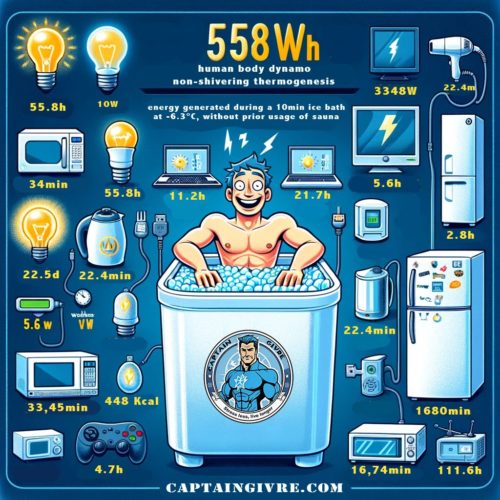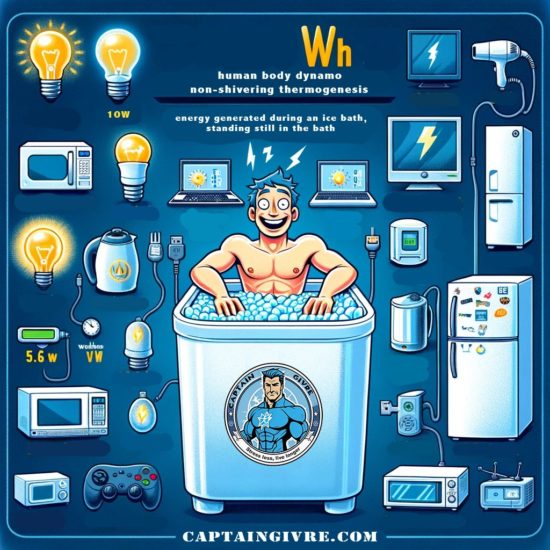Inspired by the iconic Matrix movie, where Morpheus reveals to Neo that humans can be likened to batteries, I delved into a personal experiment to highlight the incredible energy-generating capacity of the human body. As a cold exposure expert, I engage in a daily ritual that not only tests the limits of human endurance but also serves as a striking demonstration of our internal power.
Imagine submerging yourself in a 200-liter tank of water at a chilling -6.3°C (20.66°F), standing still, only to elevate the temperature by 2.4°C (+36.32°F) using nothing but your body’s non-shivering thermogenesis capacity (the capacity to heat your body without using your muscle or any movements, only by using brown fat and other inner complexe body capacities). It sounds like a scene from a sci-fi movie, yet this is my reality.


